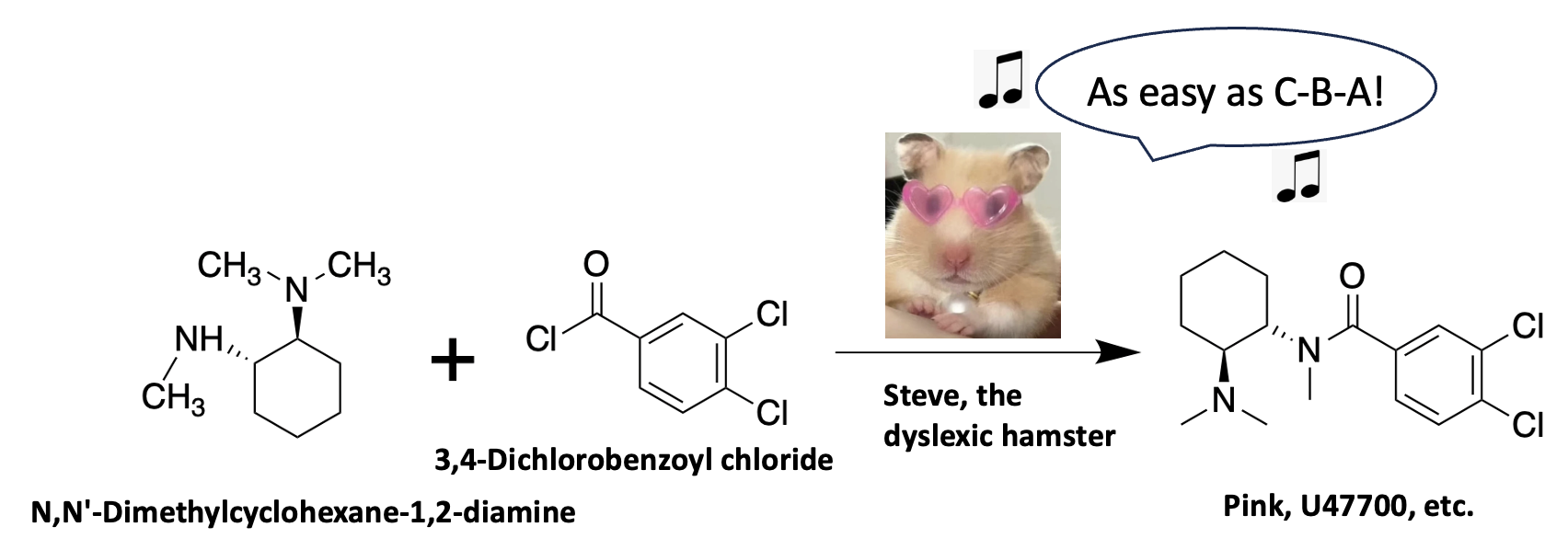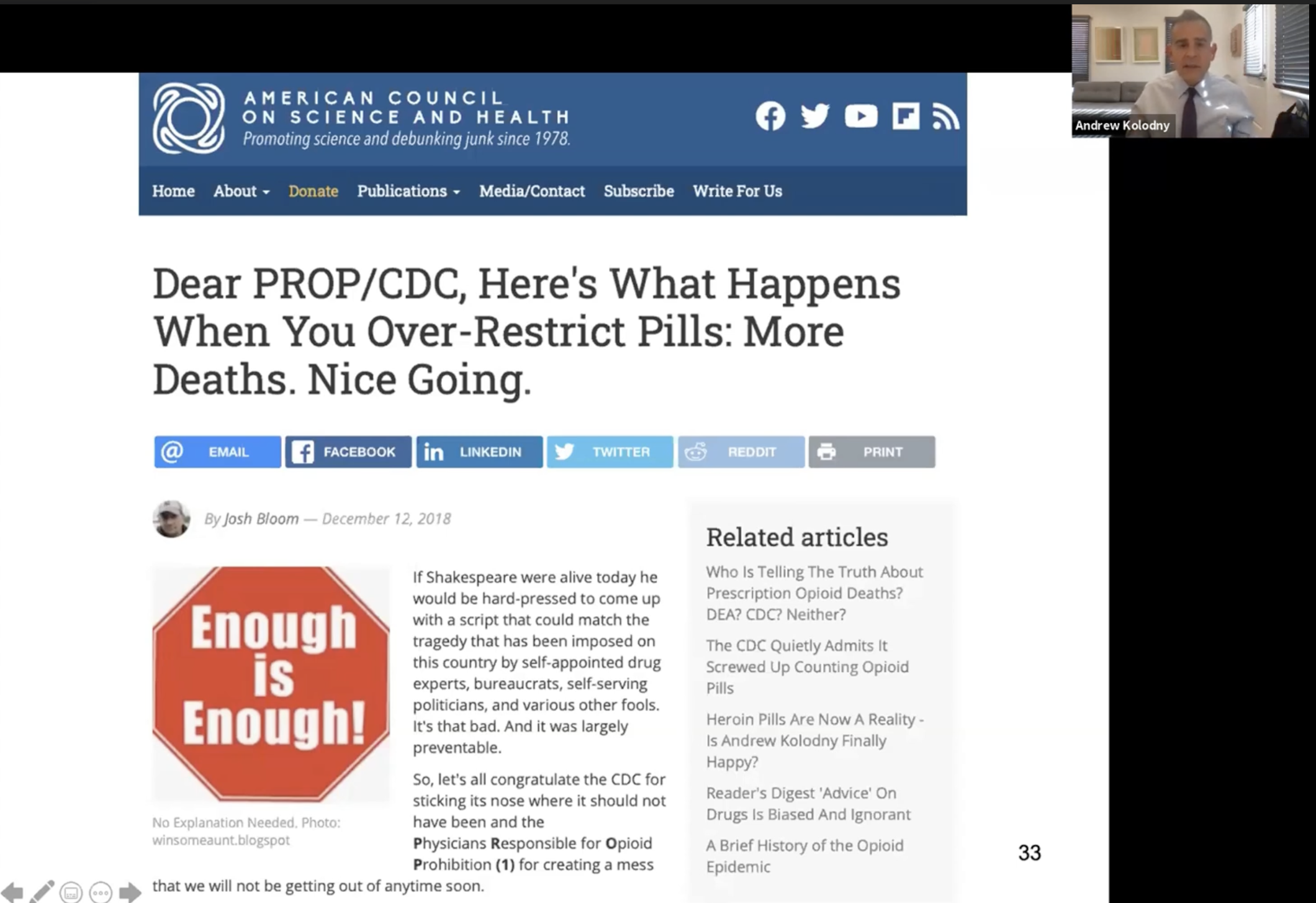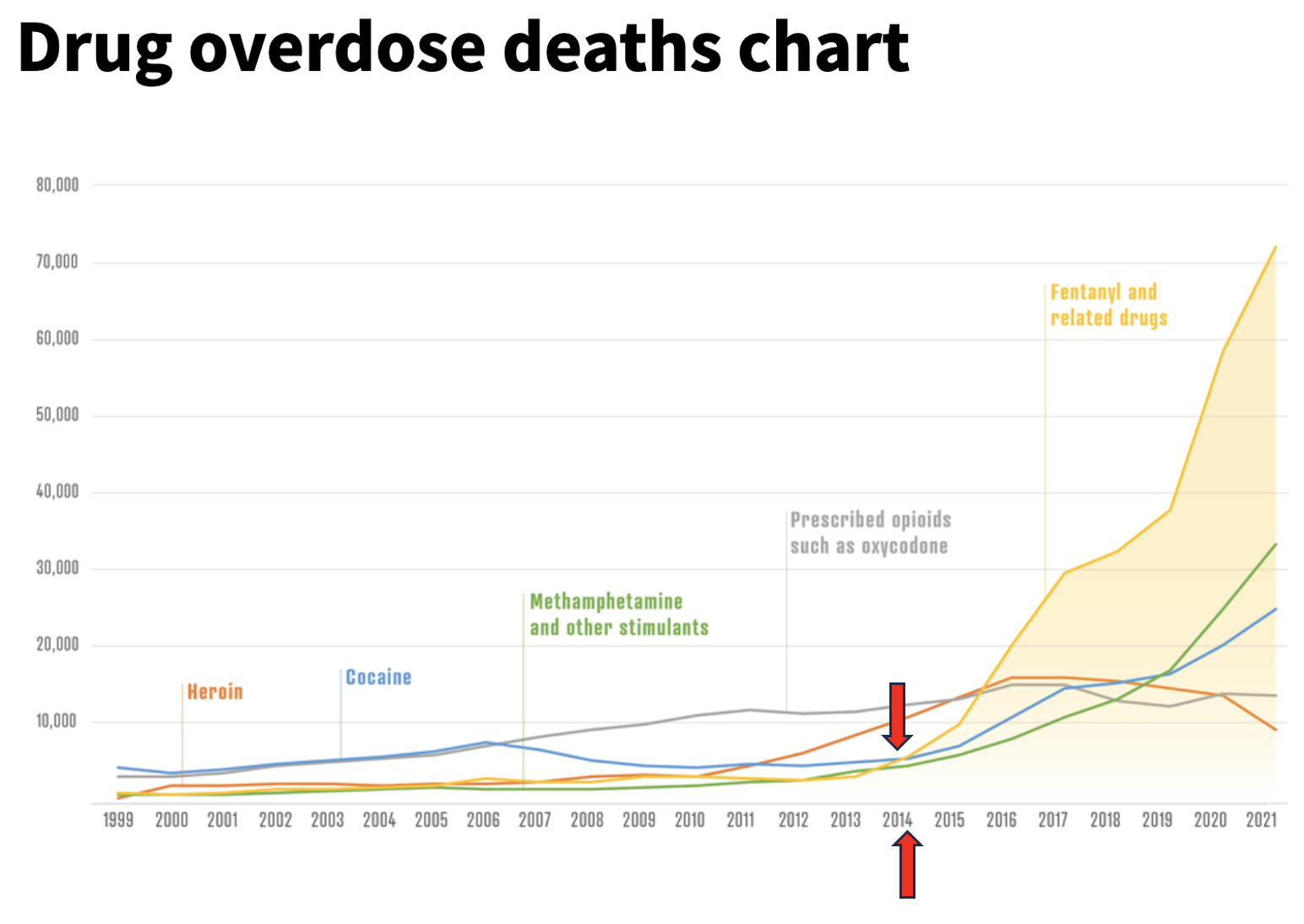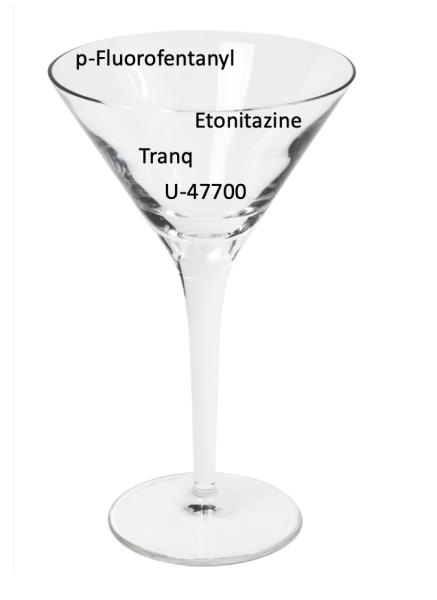My frequent writing partner Jeff Singer and I have warned many times about the "iron law of prohibition" – when the prohibition of certain drugs is strongly enforced, the result is stronger. (Here's our latest publication in the Daily Beast.) There is more than enough evidence to back this claim (Figure 1).

Figure 1. As prescription opioids became more difficult to obtain a huge market for heroin was created (~ 2010), fueled by those who could no longer afford or obtain the pills. Beginning in about 2013, in response to the demand for heroin (as well as difficulties in smuggling the drug) illicit Chinese fentanyl appeared on the scene. The inflection point, where fentanyl takes off is 2014 (1). Attempts to control fentanyl have either (probably) led to or, at the very least, coincided with the appearance of non-fentanyl opioid-like drugs.
Now, a "new-old" drug, which is called "Pink," aka U4, and U-47700 – the real name for a drug discovered by Upjohn in the 1970s. The company was looking for a more selective μ-opioid agonist with morphine-like potency as a potential treatment for cancer pain. The potency of U-47700 is actually 7-8 times that of morphine and while the drug never received FDA approval (2) it was still legal until 2018 when the DEA designated it a Schedule I drug. The first report of the drug showing up mixed with illicit fentanyl appeared in 2017.
Chemistry and the Brain
Not even the world's sharpest chemist would, without prior knowledge, examine the structures of the three drugs below and even suspect, let alone conclude, that they would have similar pharmacological profiles. This is because structurally, they look nothing alike. Yet, they are all potent opioid receptor agonists and painkillers (Figure 2).

Figure 2. Potent opioids. The chemical structures of morphine, fentanyl, and U-47700 (left to right). If you're looking for structural similarities of the three I wish you luck (3).
Illegal Drugs are Easy to Make (4). Pink is as easy as it gets.
There are certain organic chemical reactions that are so easy that you could probably train a dyslexic hamster to do them. While different organic chemists may have different opinions about the easiest of all, one of them – amide formation – has to be on everyone's "Top 5" list. Here's how you (or the hamster) can make U-47700, an amide.

Figure 3. Steve, the dyslexic hamster, synthesizes U47700, while at the same time butchering a Jackson 5 song. Perhaps Steve should join D-A-M (Mammals Against Dyslexia).
One caveat is that, although the synthesis shown above is trivial, it's success depends upon whether the two precursor starting materials are easy to obtain. (For example, if the starting materials to synthesize a drug are not commercially available and require multiple-step syntheses to make, there is no way this drug will hit the street. The time and skill set required for this make the synthesis prohibitively difficult and time-consuming. This is why street drugs are easy to make; otherwise, they wouldn't be street drugs. Fentanyl, Tranq (xylazine), methamphetamine, GHB, and Ecstasy – to name a few – can all be made from readily available chemicals. (5)
This sure ain't a problem with Pink. The chemical on the left (N,N'-dimethylcyclohexane-1,2-diamine) is available from 28 chemical vendors, and 3,4-dichlorobenzoyl chloride from 59. (6) (Figure 3). Bottom line: anyone with any chemistry experience could make this drug in the kitchen. It's that easy.
Time to Worry?
Probably not quite yet, because the number of poisonings from U47700, estimated to be "well over 100" doesn't begin to approach the impact of illicit fentanyl. Still, Michael Rubino, Ph.D., writing in Patch, nonetheless sounds a warning bell.
While parents worry about fentanyl, they need to worry about Pink too. The drug is very deadly, cheap, and easy to get...This drug is twice as strong as heroin and seven times as strong as morphine. People often die the first time they use it...The drug is so deadly that the amount equivalent to a few grains of sand can kill someone. They call it Pink because teenagers typically snort it off their pinky.
Is the Title Fair?
It should be obvious by now, except perhaps to the willfully blind members of PROP, that not only has the "prohibition" of legal opioid medications resulted in the deaths of tens of thousands more people every year but also in the appearance of new and or different drugs. More than ever we are playing "Drug Whack-A-Mole," something I wrote about in 2016.
Andrew Kolodny, the president of the execrable Physicians for Responsible Opioid Prescribing (PROP), maintains that the relationship of different "phases" of the opioid epidemic is merely temporal – the progression of safer to more dangerous drugs "just happened." I argue that the progression from prescription drugs to heroin to illicit fentanyl is not only associated with drastic cuts in legal opioid drugs it was, in fact, caused by it, something I will be writing about soon. Based on this, the "Kolodny Kocktail" title, although satirical is not far from the mark.

Despite a drastic cut in opioid prescriptions between 2012- 2019 (red arrows) deaths from opioid overdoses (yellow arrows) (obviously not from prescription medications) soared. And this trend has continued since. Nice going. Source: National Center for Drug Abuse Statistics
Unsurprisingly, Kolodny disagrees. During a webinar, he showed one of my articles during the "False Narrative" portion of his talk! Clearly, we have different narratives. But, unlike Kolodny, I haven't made a fortune off of mine.

- Kolodny (upper right) dissses one of my articles in a 2021 webinar. Forgive the image quality, but ACSH can't afford a fancy website like Pharmed Out, a vehemently anti-pharmaceutical entity, that hosted the webinar. Pharmed Out is part of the Georgetown University Department of Pharmacology – perhaps the last place I'd go to learn about pharmacology. If a drug company discovered a cure for death I wouldn't be surprised if Pharmed Out claimed that it was "too toxic."
And who's the head of Pharmed Out and Chair of the pharmacology department? Why, it's none other than Adriane Fugh-Berman, who got dismantled by Dr. Jeff Singer in a 2022 debate (7) and then compounded matters by lying about ACSH being heavily industry-funded when she couldn't answer my simple question. (See A Surgeon And A Non-Practicing Anti-Opioid Zealot Walk Into A Bar: The Singer Fugh-Berman Debate.) It cannot be surprising that Fugh-Berman is a member of PROP, and that she has also profited handsomely by working with lawyers suing drug and/or medical device companies, just like Kolodny. Quite a cozy club, no?
Bottom Line
The "iron law of prohibition" continues its rule. If you think that this mess stops with Tranq, Pink, or new, deadlier fentanyl analogs think again. One can only imagine what horrific chemicals will be next to enter our illegal drug supplies but it is all but certain that organic chemists in China have a list – one that is potentially infinite – ready to go. It's only a matter of time.
NOTES:
(1) See for yourself:

Source: NIST
(2) This is apparently due to safety concerns.
(3) Your eyes may not see it but your brain does. All three drugs bind strongly to opioid receptors (not necessarily the same subtype) in their own way. Molecular modeling can show how seemingly dissimilar drugs can bind to the same receptor.
(5) Some drugs are derived from natural sources, mostly plants. These are usually very difficult to synthesize from scratch from readily available lab chemicals. For example, cocaine, morphine, heroin, and LSD would be nightmarish to start from simple lab chemicals. It will never happen.
(6) Chemical vendors can be located on the National Library of Medicine's Pubchem site.
(7) The debate question was "Is America's Opioid Overdose Crisis the Result of Doctors Over-treating Patients with Opioids?". Singer argued no. Fugh-Berman argued yes.




